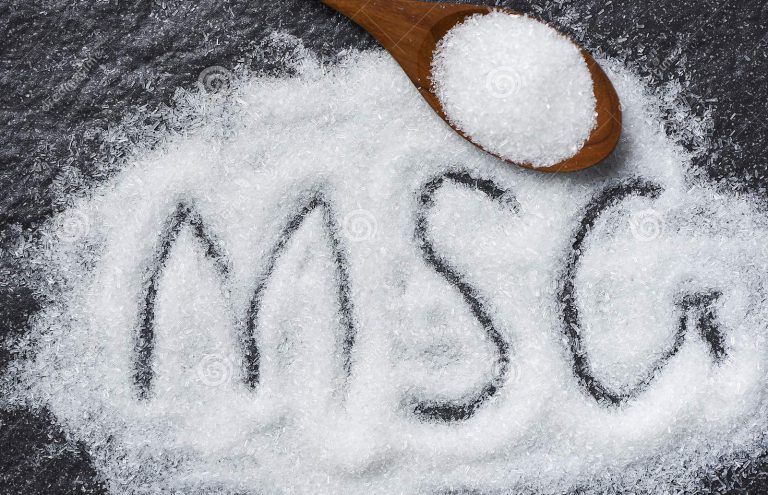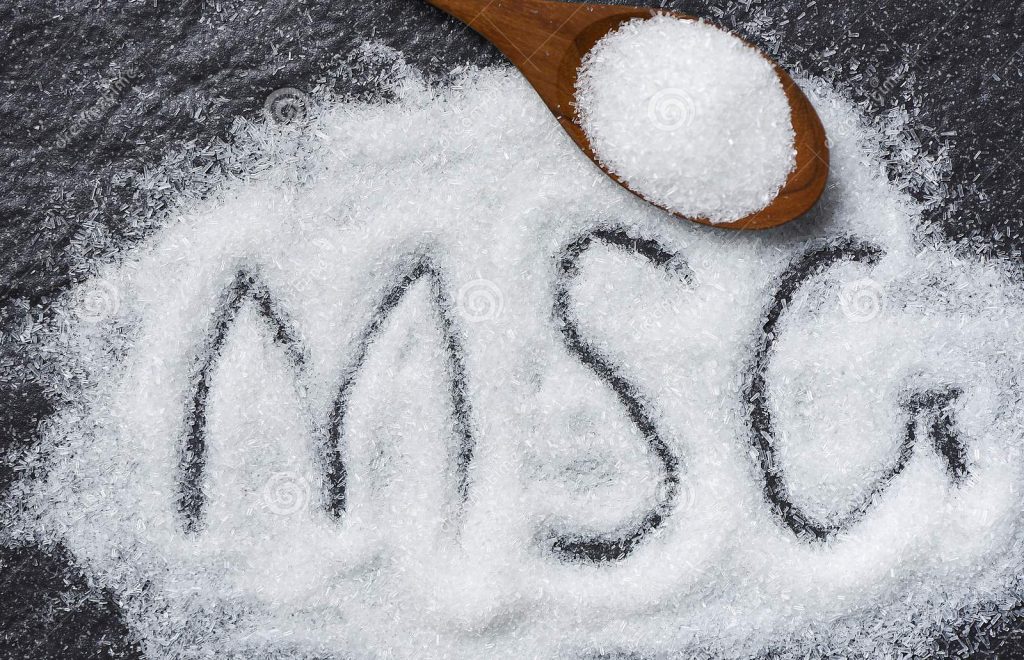
- Readers Rating
- No Rating Yet!
- Your Rating

Monosodium glutamate or MSG is everywhere, and it’s even more prevalent than you might think. If you buy some chips at your local newsagent’s or supermarket and read the ingredients, you will probably find this substance. This additive is responsible for our trips to the pantry to snack on potatoes, or for our impulses to buy more and more bags of snacks. That is why today on the mentta blog we are going to tell you what monosodium glutamate is and what its main characteristics are.
What is MSG?
Monosodium glutamate is a substance used by many companies whose main purpose is to act as a flavour enhancer. It is the sodium salt of glutamic acid (a very common non-essential acid) and is obtained from fermentation processes. It is usually added to foods to enhance their flavour, and in our body it acts as a neurotransmitter. What are neurotransmitters? They are molecules that are synthesised in neurons and modify the activity of the nervous system. In other words, a neurotransmitter is a biomolecule that enables the transmission of information from one neuron to another.
The origin of this additive dates back to 1908, thanks to the discovery of the Japanese professor Kikhunae Ikeda. He extracted the substance from a seaweed broth, an element that gave the broth a great taste. The following year, glutamate was already on the market. It is true that there has been some debate about the health benefits of this additive.

Is it good or bad?
When Japanese professor Kikhunae Ikeda discovered glutamate, it quickly began to be marketed. Since then, the additive has been constantly under investigation for toxicity. Why? Well, it all starts when a man decides to try a Chinese-American dish. After ingestion, he develops symptoms that fit into what would later be called “Chinese restaurant syndrome“. The ingredients that could have caused this could be the alcohol in the wine, the sodium or the glutamate, but the experts quickly focused on the latter.
And so it was, they recorded a series of symptoms that could appear in a small section of the population because of glutamate. These are a set of symptoms that encompass the Chinese restaurant syndrome: Flushing, headache, sweating and hot flushes, burning in the mouth, facial pressure and swelling, tingling in the face, muscle aches and pains, vomiting and nausea.
While glutamate is therefore not considered a dangerous ingredient, it is true that it can affect a small part of the population in a bad way. Moreover, like everything else in life, excessive consumption of glutamate can be harmful. However, many expert bodies have confirmed that it does not pose a health risk.
Excess and deficit
- What happens if I take too much? Taking too much can lead to neurotoxic effects or kidney damage. Amino acids are not metabolised and can cause an imbalance of neurotransmitters. It can be a risk for brain disease and cognitive impairment, cause epilepsy, migraines…
- What about glutamate deficiency? With the intake of the additive, the body creates glutamine. Its deficiency is associated with fatigue, sleep disturbances or irritability. In addition, glutamine increases the production of GABA, the most important inhibitory neurotransmitter. This deficiency is corrected through the consumption of natural foods with glutamate, not in the chemical enhancer.

What are the risks?
The food industry is adding more and more glutamate. One of the main reasons for this is to make the food taste better, as well as to create an “addictive sensation”. This additive does not cause addiction as such, but it does cause low satiety and an increased desire to eat. In fact, it is difficult not to find an article on the web that speaks highly of this substance. It is true that it is not classified as a dangerous ingredient, but it is important to know the risks of glutamate consumption:
- Cardiovascular disease: it promotes the risk of cardiovascular disease and hypertension. In addition, the secretion of insulin by this substance also increases the risk of diabetes.
- Risk of “addiction”: MSG is an excitatory neurotransmitter. Frequent consumption can lead to loss of taste and enjoyment of foods with additives.
- Allergy: Glutamic acid intolerance means allergy to the additive. This does not affect too many people, but it is still advisable to limit consumption of industrial foods or foods with a high glutamic acid content.
- Weight gain: to the “addiction” we add weight gain. This additive increases the uncontrollable urge to eat more, which leads to rapid weight gain. In addition, it triples the insulin level in the blood and predisposes to obesity. The clear example of this risk is bags of chips (your favourite), it is very difficult or almost impossible to stop eating them or to keep a bag for more than two days.
- Chinese restaurant syndrome: as mentioned above, Chinese restaurant syndrome is considered to be a phenomenon caused by ingesting large amounts of glutamate.

A commitment to healthy eating in mentta
Foods with the most MSG
- Soya: a relevant fact is that oriental food has the highest amount of monosodium glutamate, and soya could not be less.
- Cheese: Parmesan, Roquefort, cheddar…Most of the packaged cheeses we eat contain this additive.
- Meat: Serrano ham or cured sausages, generally packaged, are not far behind either.
- Fish: especially tuna, anchovies, bonito, squid, clams.
- Fruit juices and sachet soups: generally all contain some of this substance to intensify their flavour.
- Vegetables: they naturally contain glutamate, such as peas, mushrooms or tomatoes.
- Chips and potatoes: potato crisps, chips, pipes…Everything you can imagine in the delicious world of snacks contains this additive.
Staying full on healthy food is more complicated, especially without enough information. If you want to eat healthily and get enough to keep you satiated so that you don’t snack all afternoon, don’t miss our posts, especially the ones about satiating foods. Take note!
References
- Navarro, C. (2021, 12 Marzo). Por qué conviene evitar los glutamatos (aditivos potenciadores de sabor). Cuerpomente.com. https://www.cuerpomente.com/alimentacion/glutamato_7958.
- Anónimo. (2020, 12 Diciembre). Propiedades y beneficios sobre el glutamato. Bienestarysalud.info . https://bienestarysalud.info/propiedades-beneficios-sobre-glutamato/.
- Anónimo. (2021, 17 Enero). Definición: qué es el aminoácido glutamato o glutamato de sodio. Fisioterapia-online.com https://www.fisioterapia-online.com/glosario/aminoacido-glutamato-o-glutamato-de-sodio.
- Anónimo. (2022, 31 Enero). Glutamato monosódico, ¿es cierta la leyenda negra que pesa sobre este aditivo? Elmundo.es https://www.elmundo.es/yodona/lifestyle/2022/01/31/61f2d07d21efa0f0268b4578.html
- Montes, R. (2018, 21 Octubre). Beneficios y efectos adversos del glutamato. Saludybelleza.net. https://saludybelleza.net/glutamato/#:~:text=El%20exceso%20de%20glutamato%20puede%20aceler
- Pérez, C. (2021, 3 Marzo). Glutamato monosódico: qué es, efectos secundarios, riesgos y cómo encontrarlo. Natursan.net. https://www.natursan.net/glutamato-monosodico-que-es-efectos-secundarios-riesgos-y-como-encontrarlo/
